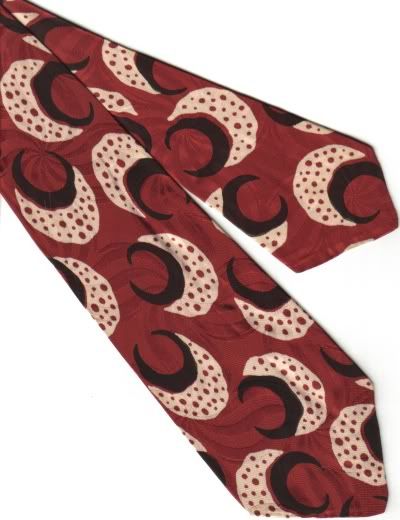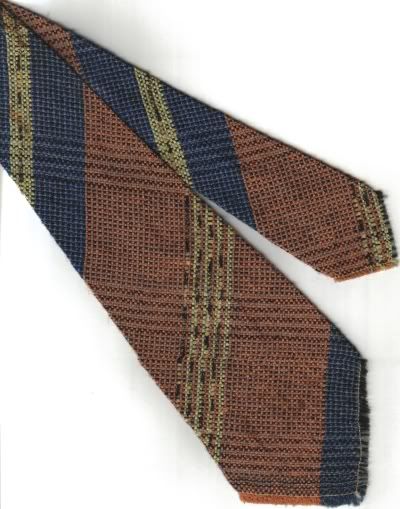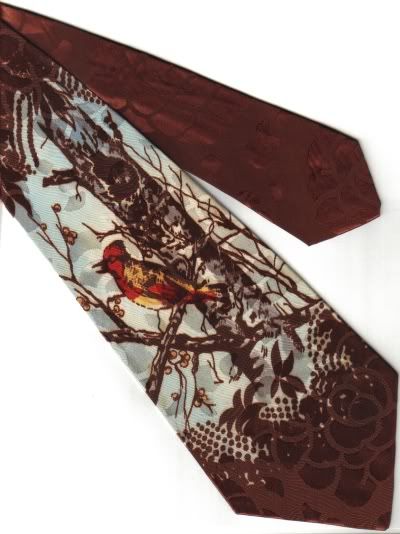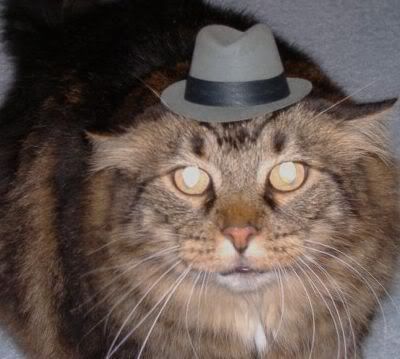The critics of the tie have one fact right: they are merely for looks and are in no way functional. But this fact does not matter, for if every piece of clothing we wear was purely for function this would be a bland world indeed. Sometimes the 'hassle' of a tie should be outweighed by the ability a tie offers to communicate personality and mood. Vintage ties are morsels of bold personality and character rarely seen in the subdued ties of today. Art deco, tartan and plaid patterns were the rule of the day and, as seen below, they could be both spectacular and ugly at the same time. Ugly in a good way.
 But the patterns and scenes were not the only points where vintage ties blow away modern ties. The fabrics used were incredible, most ties being made of incredibly smooth, soft and flexible silk, though many were made of cotton and even wool, as seen in the tie below.
But the patterns and scenes were not the only points where vintage ties blow away modern ties. The fabrics used were incredible, most ties being made of incredibly smooth, soft and flexible silk, though many were made of cotton and even wool, as seen in the tie below.
Modern ties, while sometimes made of similar fabrics, are fat and much less flexible, making them more difficult to tie into anything other than a fat Windsor knot (named after the Duke of Windsor, though he denied creating this more modern knot type). The small-knotted half-Windsor was prevalent throughout the 1930s-1950s and definitely goes better with vintage long-pointed collars with medium to no spread than does the obese Windsor knot.
 Vintage ties are unique. Generally, ties from the 1930s and 1940s were very wide while in the 1950s they began to shrink in width, though the patterns remained classical art deco throughout the mid-1950s. It was the late-1950s and early-1960s when ties began to thin to an extreme extent. Perhaps this visual of the thin tie tightening around the wearer's neck is the hearth of the tie 'noose'.
Vintage ties are unique. Generally, ties from the 1930s and 1940s were very wide while in the 1950s they began to shrink in width, though the patterns remained classical art deco throughout the mid-1950s. It was the late-1950s and early-1960s when ties began to thin to an extreme extent. Perhaps this visual of the thin tie tightening around the wearer's neck is the hearth of the tie 'noose'.Whatever the reason, ties are becoming rare animals, especially those of such vintage character when a man's mood could be determined by what tie he put around his neck that day. The casual business day took its toll on the tie, nearly banishing it to the drawer. Even Peter Fleischer, an executive of Google, rejects the decorative neck-hanger for T-shirts since he believes they restrict blood flow to the brain, are conformist and deny a man's masculinity
But what better way to show ones masculinity than to wear a nice tie?


